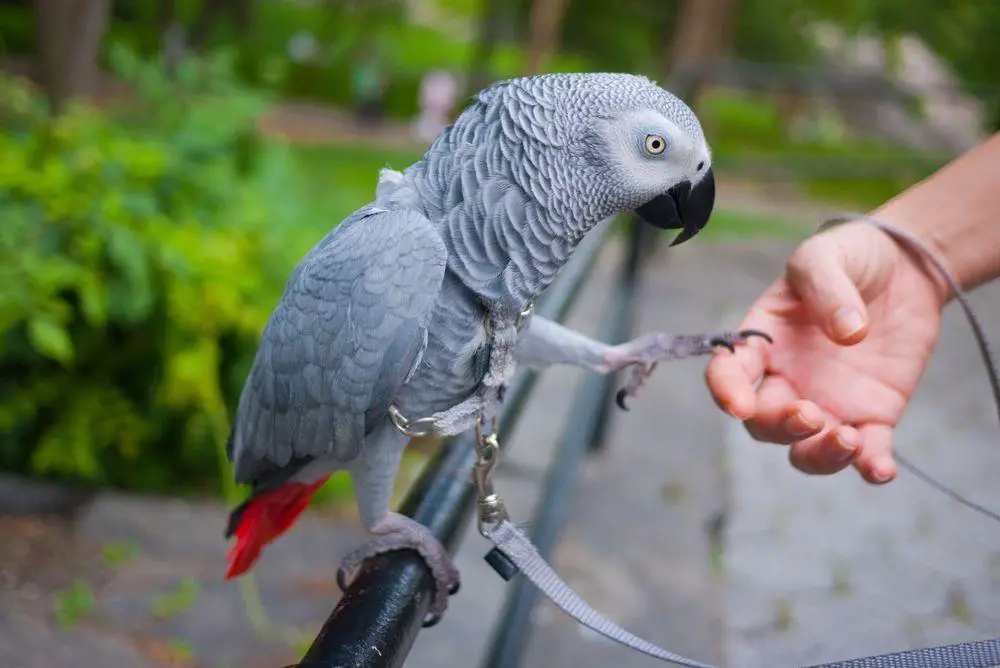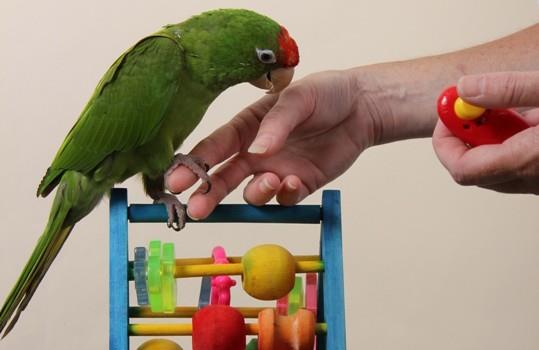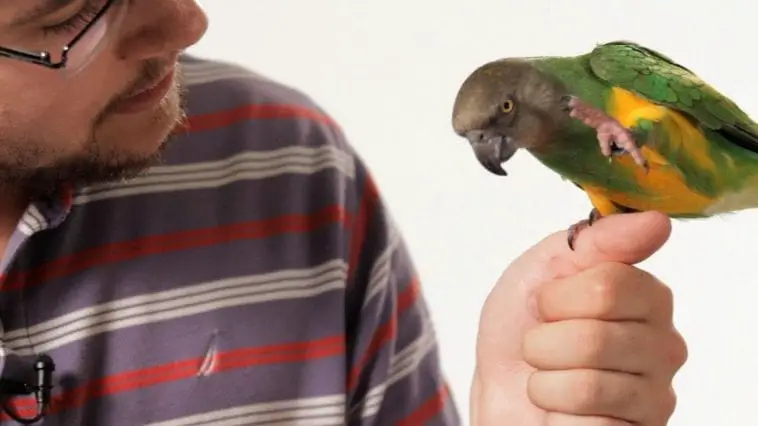Video Source: Youtube
A trained parrot can be at least as clever as the average of a two-year-old toddler, as stated by a study issued in the Scientific American. Like young children, the parrot also craves the stimulant of new activities because it helps the parrot’s brain to grow as well as to develop. It just always makes sense that your pet parrot might belong for the same, and they even carry out equally well during the training sessions.

Easy Parrot Training Guide
You may begin with a basic training lesson. It is just like you start to teach a child about math to solve a calculus problem. It is somehow hard. So it is unwise to begin your lesson by teaching your pet parrot to sing the whole song or know a sequence of such complicated dance steps. The result of these will become frustrating for you both. Preferably, most of the experts suggest that you may start with the basic training; this is the best method to start with your training.
Helpful Tips When Training a Parrot for the First Time
1. The best thing to do is begin with the common lesson that most of the hand-fed parrots learn just right out to the next is the instruct to “step up.” This order educates your pet parrot to step off its perch to your finger.
2. You may create a safe as well as distraction-free training space for your parrot. When you choose a crowded, rowdy, or a visually deflect place to conduct training demonstrations, your parrot will feel like you’re having a phone conversation in a crowded place.
3. Your parrot requires feeling enjoyably connected and also too focused. Your parrot should also enjoy every training session and to master every task that is presented. Just choose a favored pole, or you may play stand in a place that your parrot can sit comfortably during your training sessions. Place that perch in a familiar room that is quiet. You may also choose some favorite toys or some treats to be used as reinforcement.
4. Select a practical tutorial lesson for the first number of sessions. Try to make a list of a few ideal standards that you would like to have for a pet parrot. You may suppose to choose quality lessons that your pet will enjoy doing. Of course, you have to choose a training lesson to fortify the qualities that you may want.
5. Teach your pet when it is already hungry. If you intend to include food treats into your pet’s training session, then you may avoid teaching your pet with a full stomach. Relatively, wait until your pet might start to get hungry. The best thing you may do is to observe your parrot and notice which the food items are its more desirable to eat. If that food item is quietly big, like apples, then you may cut them up into small bits. This technique will give you more teaching time before your pet may get full.
Allow Your Parrot to Enjoy Training
Make the training session as a form of your pet’s enrichment. Like a human, each parrot also has a unique personality as well as temperament. It is said that not all the parrot will easily learn all its training lessons, but with a lot of patience, your pet may learn some lessons very well. As your pet’s associate, caregiver, and also a trainer, guide your pet thinking that is favorable in training time as an enrichment to your pet parrot to learn and enjoy.
Start an Early Training Session
Try to start your training session early. Like the young human, baby parrots also tend to have knowledge as well as interaction. If you want to have a baby parrot, it is the perfect timing to teach them at an early age. But, commonly, a baby parrot will usually have a shorter span to have useful attention than a fully mature bird. So try to train your pet gradually or step by step.
Also, avoid to include treats as rewards to prevent over-feeding your pet. Never shout or try to discipline a baby bird for its behaviors like biting. This doing might just scare your pet and can lead to discouraging to learn more further pieces of training.
Using a Clicker to Teach Your Parrot
Try to use a clicker for every training session with your pet. the “clicker training” was the first manufacturer to be known by Karen Pryor, she is one of the great inventors on this successful training methodology. Karen Pryor interprets some techniques that a pet owner may use to teach some exotic animals such as dolphins to project like a domesticated pet.
The clicker is just an uncomplicated device that produces a clicking sound when you pressed the button. They used the click as an instant supplementary for a new teaching gesture. A treat is usually followed as a reward for these training techniques. Acquire a clicker to apply as a tool for training your pet. if your pet needs something you want to boost, use your clicking tool to make a clicking sound, then your pet may follow your command and give them a desirable reward like food treats.

SafeTraining Tips
Always make sure to keep your pet safe when you are planning to train them outside their enclosures. Most of the flighted parrots or simply known as the birds that still have their long flight feathers, can acquire to wear a flight harness when they are going outdoors. It is not necessary to clip the entire wing feathers; you may just clip a few longer flight feathers so that your pet cannot be able to attain lift-off.
Train Your Parrot and Improve Vocalization
As a pet owner, it is necessary to be aware of your pet parrot’s vocalization strengths. Based on a study, some parrots are having a specialization regarding learning some words. While the other birds are more expert at whistling songs and also imitating a sound.
If you are aware of your pet’s vocal strengths, you can focus on training with its strength. Observe as much as you can about your pet so you can choose a training that will be easier for them to master.
How to Potty Train Your Parrot
Potty train your pet parrot when they reach their right age. It is totally possible to potty train your pet. Even the Parrot University also includes this in their training program so that pet owners may use to do so. But always keep in mind that it is required to wait until your pet’s digestive is mature or fully develop when you fail to wait for it your pet’s potty training might be devastating for you both. Delay this training technique until your pet may reach for at least one-year-old.

Final Thoughts
You may feel that this is such a daunting task to train your pet to play some tricks, talk, or even stay to sit on its perch during a training session at first. But the secret to training your parrot’s well is you need to have enough training time and a lot of patience. By just simply staying patient and provides a regular enough time for the training session, you will start to find out how smart and capable your parrot can be. You will also have a deep bond and interaction with your pet every time you train together, which is a good benefit for an owner as well as its pet.



